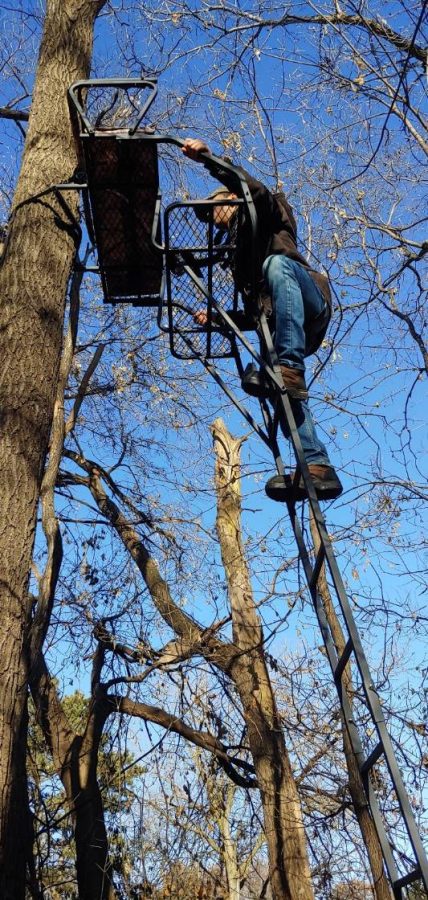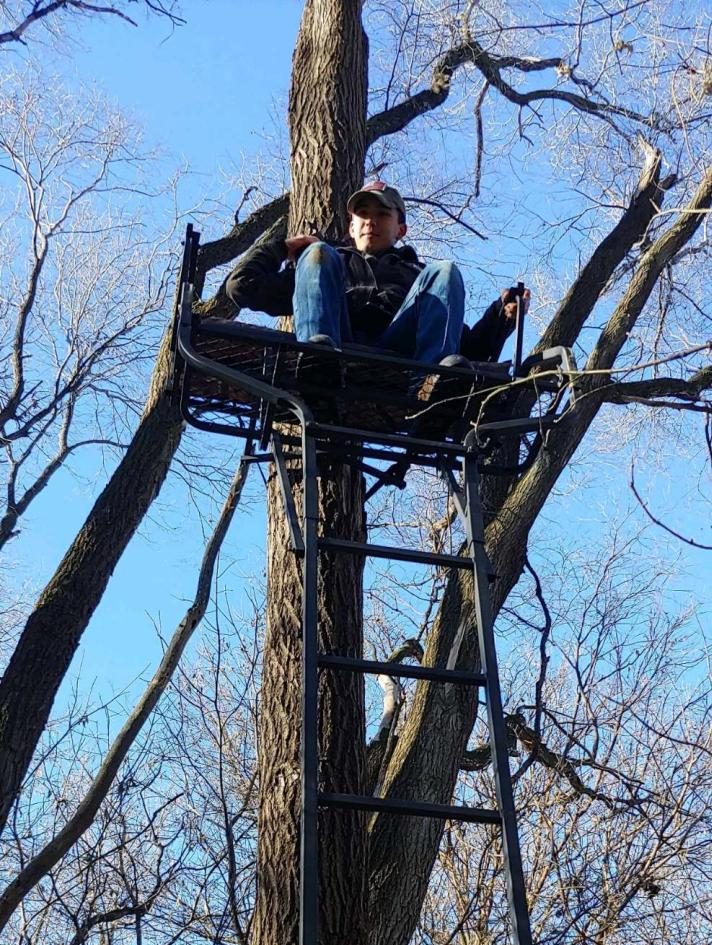Hunter Safety
October 14, 2021
Summer has begun to give way to shorter days, cooler weather, changing leaves, and animals putting on their pounds in preparation of winter. This brings in the openers of various 2021 hunting seasons. For the past month, most small game species are open as well as deer by archery and black bear. It is our responsibility as outdoorsmen and women to remain safe while enjoying our favorite pastimes.

Blaze orange is your friend. This bright color indicates to other people that you are in a specific area and they should be aware of your presence. Minnesota requires that small game hunters wear a blaze orange or pink garment above the waist, excluding gloves and sleeves. While blaze camo patterns are
allowed, they must be at least 50% orange per square foot of fabric. Blaze clothing is not necessary for waterfowl hunters but is necessary for archery deer, bear, and turkey only if there is an active firearm deer season open.
Tree stand harness systems save lives. It may be a hassle to untangle those full body harnesses, but they are a must if you hunt out of an elevated stand. While it may not seem like that far of a drop out of your stand, a harness is cheap insurance to prevent injury if your equipment fails or you slip. If you find yourself hanging by your harness remember to try your best to stretch regularly and prevent cut off circulation to your legs.
Navigation and communication is vital to a safe hunt. Hunters often venture into remote areas, far from other people. Before you leave, inform a trusted person of your intended destination, the time you plan to leave, and what time to call for help if you do not return. Maps, whether physical or digital, will give you information about land features, elevation changes, and general location. This will not only help keep you from getting lost but can provide insight into what areas may attract wildlife as well. Keeping some form of mobile communication on your person will leave a fall back in case an emergency situation arises. Your mobile phone will likely work; however, if you hunt in extremely remote areas, often a satellite phone may be a better option.
Be aware of hunting zones you may frequent and if they have the Chronic Wasting Disease (CWD) management, control, or surveillance status. If you hunt deer in any of these zones it is a good idea to visit a self service or staffed CWD sampling station. Hunters provide crucial data to the DNR in their study of CWD and its spread. Adhere to deer carcass movement restrictions to prevent the spread of CWD to unaffected populations of deer.
The Upper Midwest is rich with outdoor opportunities, public land access, and wildlife. Remain courteous of hunters and respectful of wildlife to enjoy all that the 2021 hunting seasons have to offer.


Patricia Ramirez • Jan 22, 2022 at 6:29 PM
I am not a prospector for hunting, but I think this article is interesting enough for beginner outdoor hunting explorers. Great warning tips to take into consideration for safety precautions though.